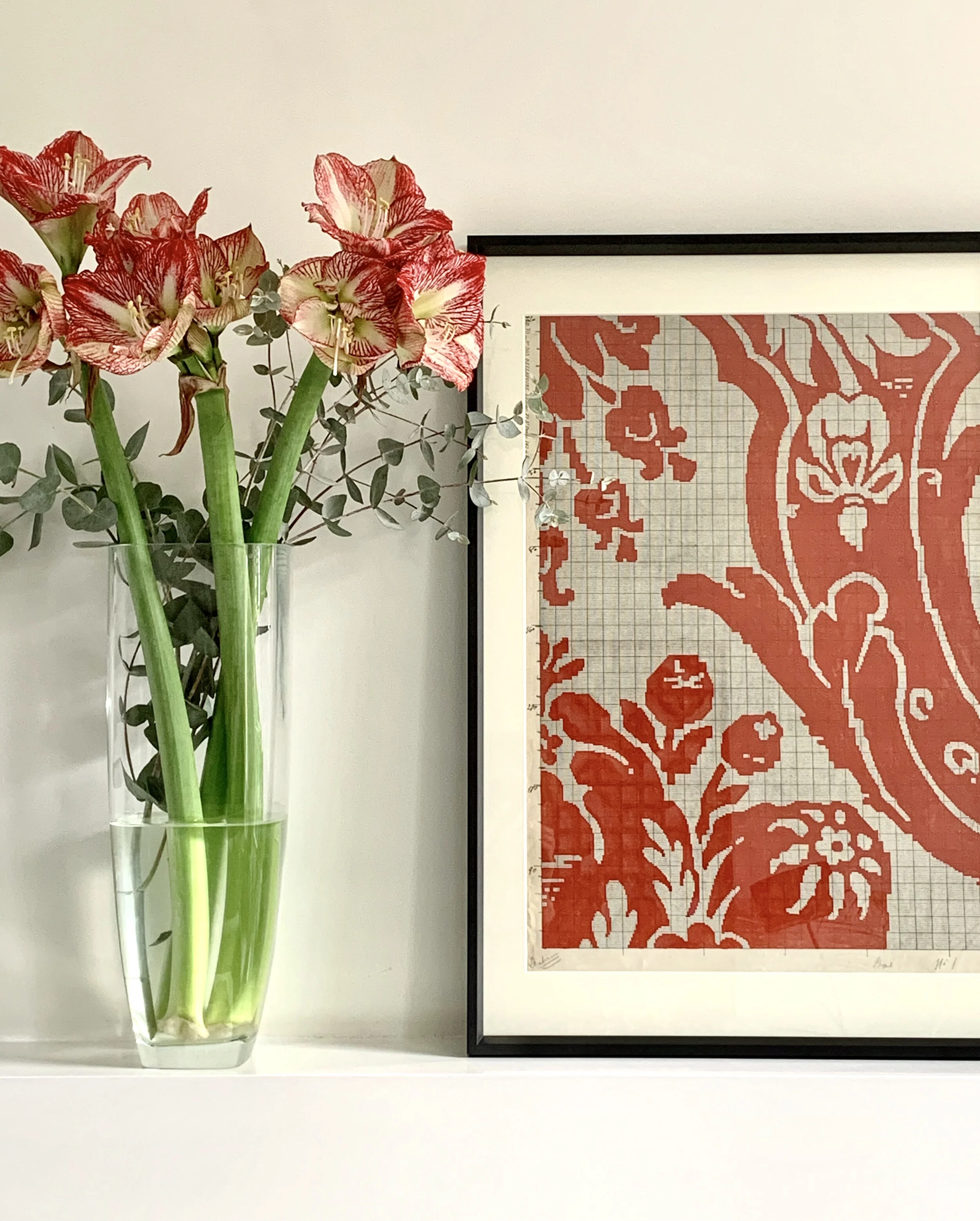INTERVIEW FOR STUDIO WESTMASS BY EMMA J PAGE
London-based textile archivist Sophie Roet began her career as a textile designer. She has sold her designs to several fashion houses, including Alexander McQueen and John Galliano, as well as having a capsule collection displayed at the Victoria & Albert Museum. Since then, she has spent more than twenty years curating an extensive archive of rare and unique fabrics and now works closely with the interiors and fashion world, helping to inspire new collections or framing unusual textiles or original textile artworks for private clients.
Antique Chinese Collar
Tell us how your love of textiles began
From childhood, I was always surrounded by stunning textiles. My mother is an interior decorator and a keen collector of fabric. At home, first in Melbourne, and then in London where we moved later, she had beautiful cloths draped on the beds or sofas and hung on the walls. My fascination with interesting colour combinations, intricate patterns and extraordinary embellishments stems from this.
What prompted you to start a textile archive?
After studying for a BA in textile design, I spent five years in Paris working for Dutch trend forecaster Li Edelkoort. While living there, I regularly visited the flea markets at Vanves and Clignancourt where I discovered exquisite antique ribbons created from sumptuous colour combinations. At the time, they weren’t expensive so I was able to purchase them and start building up my own collection of unusual textiles for colour, pattern and weave inspiration.
Tell us a little about your collaborations with the fashion world?
These days, I collaborate with designers in Paris, London and New York. My clients provide me with a brief, outlining what they are looking for, and I then prepare a curated selection of textiles from my archive, which they often use as a springboard for their forthcoming collections. As I am textile designer myself, I am able to suggest ways to interpret the designs and also propose how various designs could work together. I work with luxury fashion and accessory brands as well as high-street labels for both men's and women’s wear.
How have you diversified over the years?
Originally, I was interested in creating experimental textiles using technical yarns. Some of my earlier designs were gauze-like cobwebs woven with phosphorescent yarns which glowed in the dark. Both the Victoria & Albert Museum and the Wellcome Trust exhibited these lengths in their cabinets – at the push of a button the lights would go out and the fabric would glow. I have always loved natural fibres too and feel passionately about preserving the precious skills used to produce textiles by hand. I love the irregularities which occur, making each length individual and unique.
What can textile archives offer to the interiors world?
Textile archives are such a rich and wonderful source of colour, pattern and technical inspiration for both fashion and interiors. Handling an actual textile, rather than looking for design inspiration on a screen, allows you to feel the fabric, see how it might change in the light, what the reverse side is like and what type of techniques have been used to produce it. The original antique artworks for lace and textile designs are incredibly inspiring and beautiful – framing these unique documents is a wonderful way to both enjoy and preserve their beauty.
Original Artwork for Woven Textile Design, 1928
What have been your most interesting buying trips?
I constantly visit vintage fairs, flea markets and auctions to source unusual designs. It used to be much easier to find beautiful antique textiles but it is becoming harder as they are becoming rarer. Fortunately, I work with wonderful vintage textile dealers from all over Europe who contact me when they have designs which might be of interest. One of my most interesting buying trips was at a vintage fair in Manchester where I came across an archive of exquisite hand-drawn 19th century designs for lace. Not only are these beautiful, extremely precious drawings but they are also unique fragments of history which provide a fascinating insight into how lace was originally designed.
How does your own home reflect your love of colour and fabric?
We have an apartment in what was originally a Georgian rectory. Our home is spacious and light, peppered with artworks and textiles from all over the world - some of my favourite pieces include an antique Chinese fisherman's undershirt made of tiny pieces of bamboo which hangs above our bed, while Egyptian Assuit shawls from the 1920s are draped on doors. Years ago, I sourced some antique Japanese kimono Katagami stencils on mulberry paper at a flea market and these precious pieces are framed in the study. I also have a passion for Aboriginal art, so we have several wonderful artworks with simple patterns and hand-painted dots in shades of blue.
Why do you think our love of textiles remains so enduring?
Fabric is essential to our lives; it brings us comfort, tactility and colour. Whether used in our homes, in clothing, costume, festivals or rituals, it is celebrated throughout the world, resulting in infinite varieties in design and composition. My passion is to preserve the precious skills of the craftspeople who produce, decorate or embellish textiles so that we can continue to enjoy the unique beauty for fabric for years to come.

